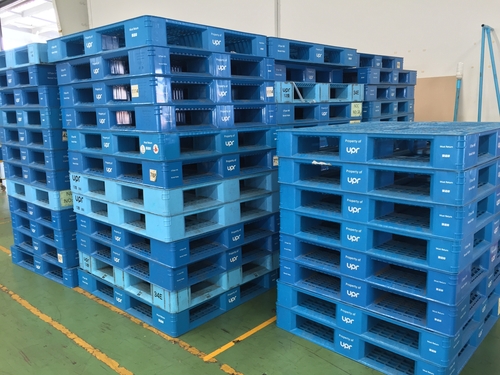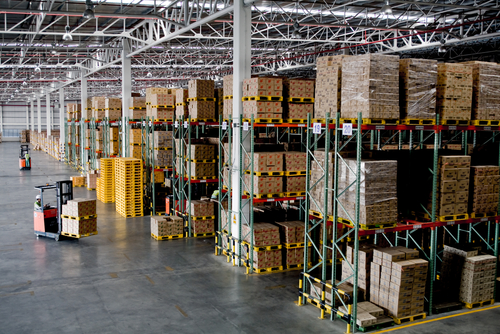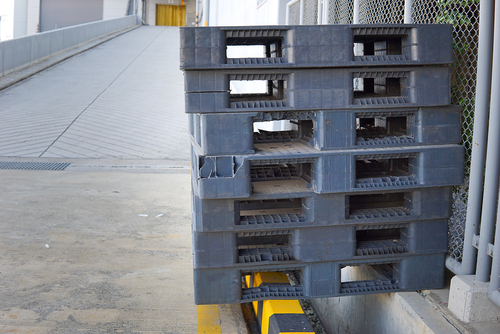Product storage is an essential aspect of running a business, whether you keep your inventory in a warehouse or onsite. It’s up to you to decide how you’ll handle your products before you send them out to the shelves, and there are a handful of options to choose from. Pallets are a popular choice across many different industries, but they’re not all the same. Educate yourself so you know what kinds of options you can choose from and pick the best one for your operation.

Skids and plastic pallets are often referred to interchangeably, but this is erroneous. There are actually a few differences between these storage options. They appear similar, but they come with somewhat different advantages. Look below to find out what differentiates skid pallets and plastic pallets.
- What Makes a Skid Pallet—The easiest way to tell if you’re looking at a skid pallet or a plastic pallet is to look at the bottom. A skid pallet has a deck on top, whereas a plastic pallet has decks on both the top and bottom. This means a skid pallet won’t be quite as sturdy as its plastic counterpart, but it can still be transported using a jack. Skid pallets are often made of wood, so be careful with fluctuating temperatures as well as the elements. Wood is susceptible to rot and water damage, and it doesn’t come with the advantage of a bottom deck.
- Defining a Plastic Pallet—The primary difference between a skid pallet and a plastic pallet is the bottom deck. This bottom deck on a plastic pallet offers the inventory stored on top of it some extra support and, in some cases, it makes it easier to transport your products safely. There’s a smaller risk of your pallet sliding off the jack when you move a heavy load, and that reduces the risk of losing products and creating a mess. Plastic is also a particularly convenient material for use in a pallet because, unlike wood, plastic is sturdy and will stand up to the elements. Some people prefer plastic pallets because they stand to last longer so they won’t require money for repairs or replacements as frequently.
- Moving Versus Storage—Both skid pallets and plastic pallets can be used to transport inventory. However, the one you choose should depend on what kind of inventory you have, how you plan to move it and where you want to store it. Skid pallets are lightweight and easy to move, but they can’t support as much weight as plastic pallets so they’re best for dragging lighter loads. Even storing skids themselves is easy because of their smaller size. Plastic pallets are better for transporting heavy loads, but you’ll need a pallet jack to get the job done.
- Choosing Between the Two—Skid pallets and plastic pallets both have their advantages. If you plan on moving your products through different conditions, it makes sense to go with a plastic pallet. A plastic pallet is typically your best bet when you move your inventory with a pallet jack in general thanks to the extra security that the bottom deck offers. If you’re planning on moving or storing heavy-duty items, plastic pallets should do the trick. If you don’t have such heavy-duty needs and you’re looking for a way to store your inventory in a particular spot, skid pallets could work fine as well. Skids also tend to be smaller than plastic pallets, so they take up less space and they’re easier to store when they’re not being used.
As similar to each other as skid pallets and plastic pallets may be, there are different situations in which each can shine. Wooden skid pallets are lightweight and easy to store, and you can use them to drag around small loads. Plastic pallets can handle heavier loads, resist the elements and typically require a pallet jack for transportation. Think about what kind of inventory you store and what you plan to do with it and brush up on the differences between skid and plastic pallets to make the right decision.

